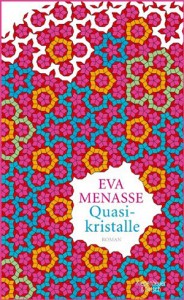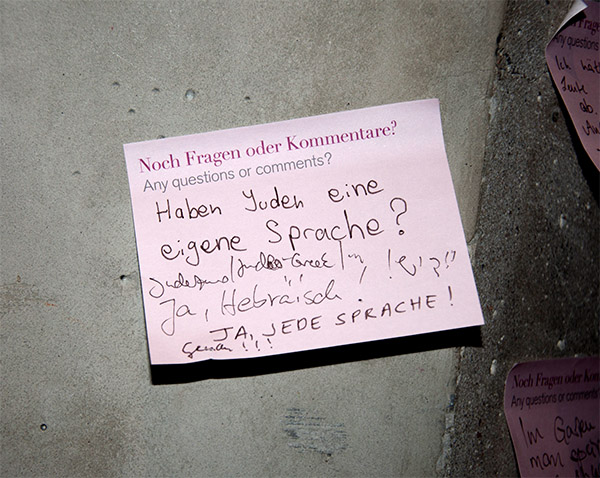Inés Garland’s Novel for Young Adults about Friendship and Love
During the week of October 21 to 27, 2013 the Academy of the Jewish Museum Berlin, in cooperation with Kulturkind e.V., will host readings, workshops, and an open day for the public with the theme “Multifaceted: a book week on diversity in children’s and young adult literature.” Employees of various departments have been vigorously reading, discussing, and preparing a selection of books for the occasion. Some of these books will be introduced here over the course of the next few months.

Why are young adult novels touching in a different way than books for adults? And why are they touching not only for young people?
Is it that the writers of stories for young adults are less embarrassed to use everything they have to elicit strong feelings in their readers?
Barring Harry Potter, I hadn’t read any young adult books since my own adolescence, until reacquiring a taste for them over the course of our reading marathon. A taste for giving myself over completely to the beautiful, tragic, comic destinies of the characters, for succumbing to a story. For example, to the story of Alma in Inés Garland’s book Piedra, papel o tijera [‘Rock, Paper or Scissors’] (in the original Spanish, or Wie ein unsichtbares Band [‘Like an Invisible Ribbon’] in the German edition): → continue reading
A Talk about Jewish Questions, the Lives of Women, and Expectations of Literature
 This blog is edited by three women, all of whom are between their mid-30s and 40. They all studied literature, and try to reconcile to one another their commitment to their profession, their interests, and their private lives. At the center of the latest novel by Eva Menasse, Quasikristalle (2013, ‘Quasicrystals’), is Xane Molin, an at first younger, and then progressively older woman trying to square her career with her wish to be there for her children and to live a good life. In each chapter Quasicrystals takes a different look at her life – and we take different looks at the novel in our discussion here.
This blog is edited by three women, all of whom are between their mid-30s and 40. They all studied literature, and try to reconcile to one another their commitment to their profession, their interests, and their private lives. At the center of the latest novel by Eva Menasse, Quasikristalle (2013, ‘Quasicrystals’), is Xane Molin, an at first younger, and then progressively older woman trying to square her career with her wish to be there for her children and to live a good life. In each chapter Quasicrystals takes a different look at her life – and we take different looks at the novel in our discussion here.
Mirjam Bitter: Since in German substantives referring to persons are not gender-neutral, I re-named our blog’s literature series from the masculine “junge jüdische Autoren”, in more gender-neutral German, to “junge jüdische Autorinnen und Autoren,” that is, “young Jewish women and men authors.” In doing that, it occurred to me that, so far, we have only talked about male authors. What do you think about introducing a woman next?
Mirjam Wenzel: I’m reading Quasicrystals at the moment, by Eva Menasse, and I’m curious what you all think about the book. → continue reading
“Do Jews have their own language?”
Our special exhibition “The Whole Truth… everything you always wanted to know about Jews” is based on 30 questions posed to the Jewish Museum Berlin or its staff over the past few years. In the exhibition, visitors have their own opportunity to ask questions or to leave comments on post-it notes. We answer some of these questions here in our blog.

“Do Jews have their own language? / Judezmo / Judeo-Greek / Yiddish! / Yes, Hebrew! / Yes, every language! Exactly!!!”
© Jewish Museum Berlin, photo: Jonathan Traenckner
This query is in fact part of any FAQ list about Judaism: it came within a hair’s breadth of being included in the exhibition. → continue reading


